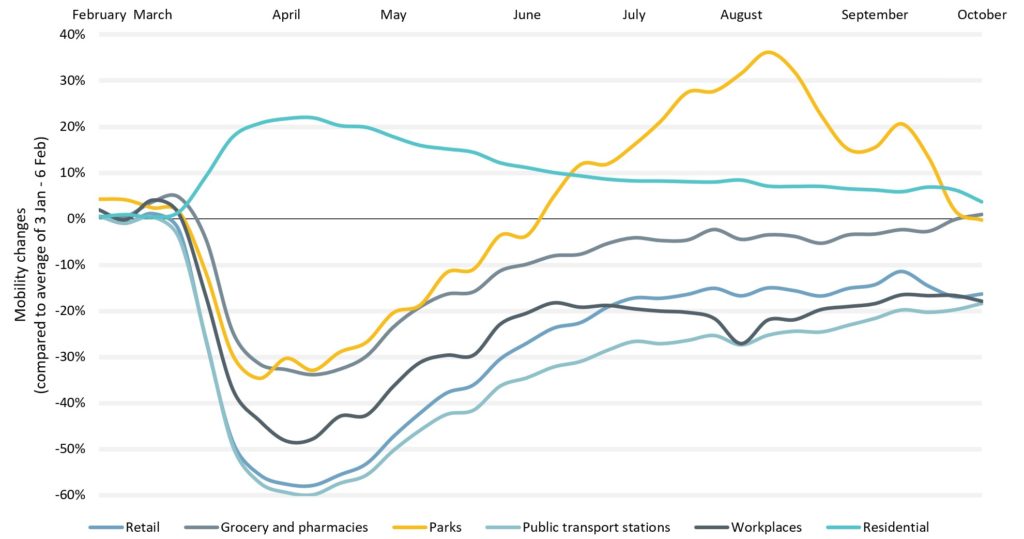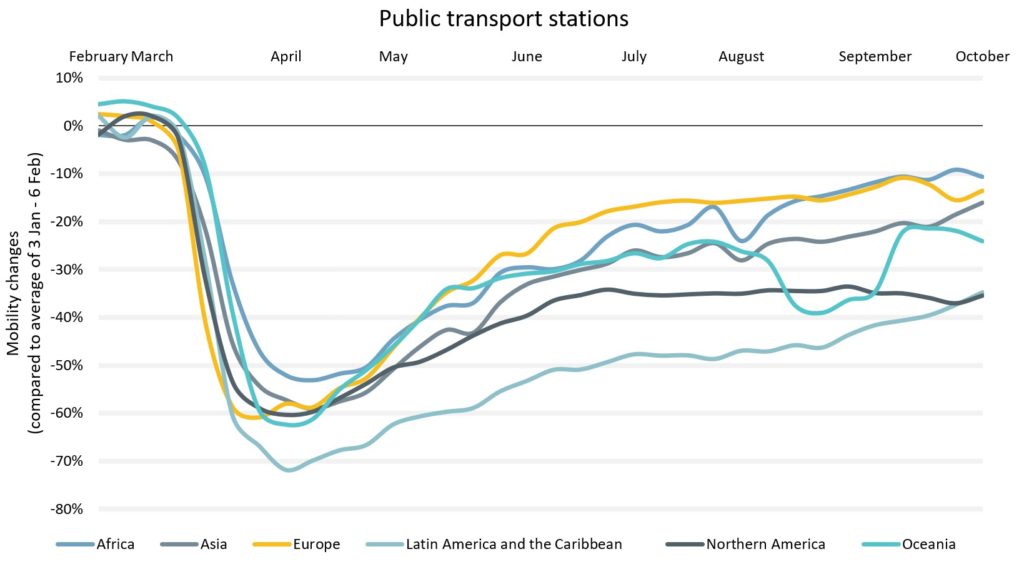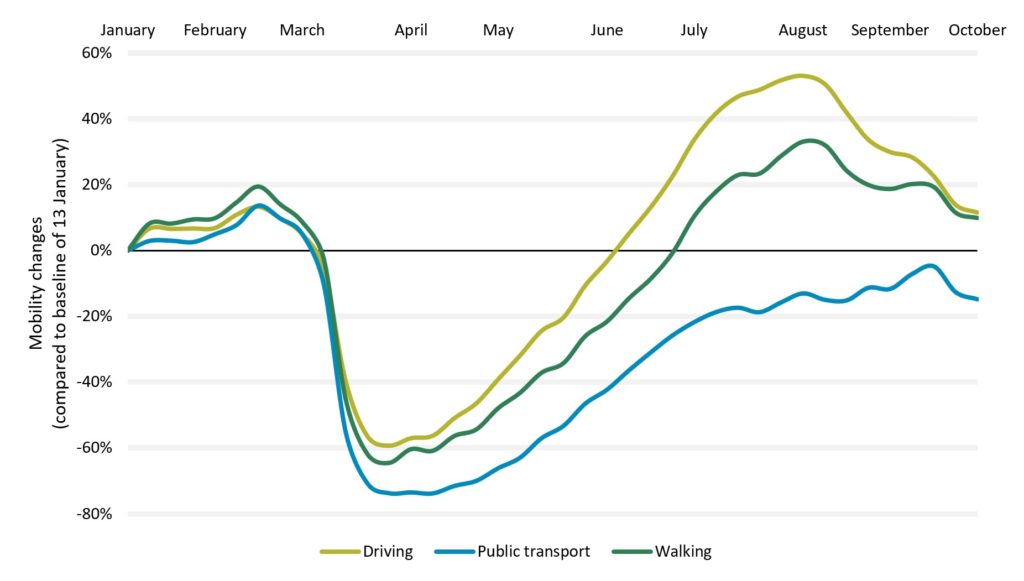COVID-19 and mobility – An updated analysis of regional impacts
It has been nearly eight months since COVID-19 was declared a pandemic. A second wave of COVID-19 infections is striking many regions, with over 42 million cases and 1.1 million deaths recorded as of 26 October 2020. SLOCAT’s preliminary analysis of COVID-19’s impact on mobility identified that the strongest decreases in mobility were recorded for public transport, with Latin America showing the strongest decrease, both in terms of mobility and emissions.
This article provides an update to the preliminary analysis, extending the timeline through early October 2020. By showing the impact of COVID-19 on mobility over the last seven months, medium-term changes in transport can be identified and t developments since the first wave of infections can be better understood. Overall, the analysis shows that mobility has recovered to some degree, with great variations depending on the region and destination.
Mobility to public transport stations recovered the slowest
On the global level, mobility to major destinations (retail, groceries, parks, retail, public transport stations, workplaces and residential areas) was highly impacted in March and April as a result of the first global wave of COVID-19 and strong lockdown measures to minimise the spread of the virus. Mobility improved quickly in May and then followed a slow improvement pathway between June and October.
Mobility to parks recovered relatively quickly, as people flocked to open air public spaces and parks during the summer months. Trips to grocery stores and pharmacies fully recovered, reaching pre-COVID-19 levels by the end of September. Trips to public transport stations took the strongest hit (60% below the average baseline in April 2020) and recovered the slowest. By the end of September, there were still 20% less trips to public transport stations than before COVID-19.

Examining mobility to public transport stations at the regional level shows that Latin America and the Caribbean, the region which recorded the strongest impact in the preliminary analysis (72% below baseline), recovered very slowly and still shows significantly less activity compared to pre-COVID-19 levels.
 North America has consistently recorded a reduction in mobility to public transport stations 35% below the baseline since June.
North America has consistently recorded a reduction in mobility to public transport stations 35% below the baseline since June.
Looking at global datasets of transport queries (driving, public transport and walking) in Apple’s map service confirms that public transport recovered the slowest. While search queries for driving and walking have surpassed the baseline of 13 January, queries for directions using public transport are still 10 to 15% below the baseline on average.

Impact on transport CO2 emissions
A recent study on the impact of COVID-19 on CO2 emissions estimates that global CO2 emissions reduced by 6.3% (1621 Mt CO2) between January and September 2020 compared to the same period in 2019. The strongest CO2 emission reductions are in ground transport, shipping and aviation. Ground transportation emissions decreased by 15.9% (787 Mt CO2) and emissions from domestic aviation decreased by 38.2% (184 Mt CO2).
These new findings and the updated analysis will be featured in an upcoming update of the preliminary analysis report and a more detailed discussion on the impact of COVID-19 on all modes will be featured in the Transport and Climate Change Global Status Report 2020 to be released in March 2021.